'Nothing is going to stop Mother Nature': Was this ice storm Eugene-Springfield's worst ever?
Springfield Utility Board manager Jeff Nelson called it the “mother of all electric system disasters.”
National Weather Service meteorologist Tyler Kranz said it was the worst winter storm damage he'd ever seen in the Springfield area.
Aaron Orlowski, with the Eugene Water & Electric Board, deemed it a devastating "one-two punch.”
Whatever you call it, the great ice calamity of January 2024 was among the worst storms in southern Willamette Valley history for its obliteration of trees, scale of power outages, impact on roadways and closure of schools.
More than an inch of ice coated some parts of Lane County following the Jan. 12-13 freezing rain event, which was extreme by itself. The following four days of freezing temperatures plus a second bout of freezing rain created an all-time event.
“Normally we get freezing rain and it’s tough, but then it warms and melts away pretty quick,” said Mindy McCartt, a spokeswoman for the Oregon Department of Transportation. “That didn’t happen in this case. It stayed so cold — and the ice was so thick — that the roads just refroze every night no matter how much de-icer and salt we used. And then we got more ice.”
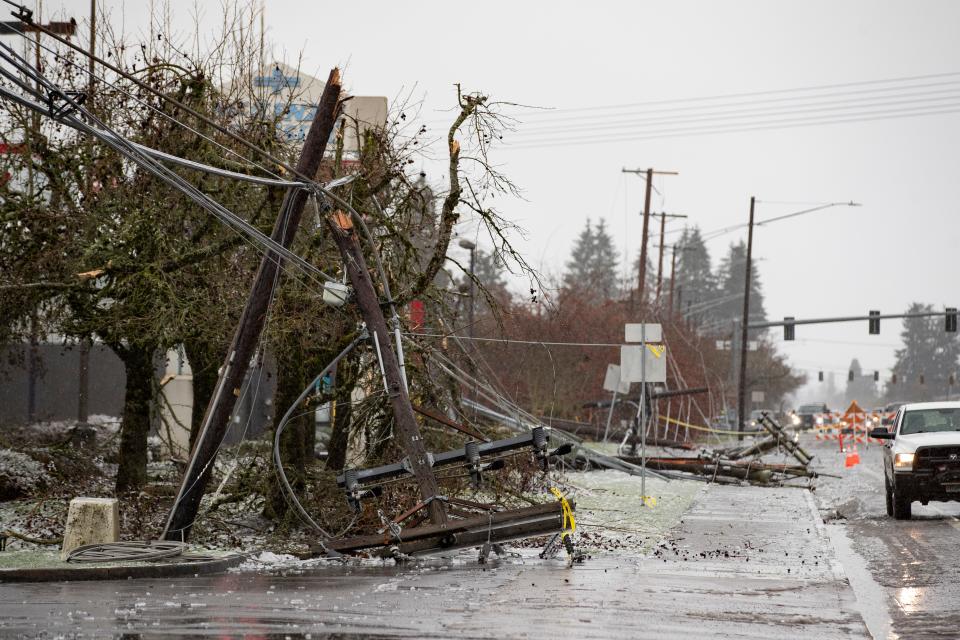
Eugene and Springfield police have not reported any deaths related to the storm, but at least a dozen people are believed to have died from impacts related to the storm statewide, mainly in the Portland area, according to news reports.
Gov. Tina Kotek on Thursday declared a statewide emergency for the storm after declaring an emergency earlier this week in Lane County. The county as well as Springfield also declared emergencies.
The storm made a major impact in one of Oregon's most populated areas in numerous ways, including:
At the peak of power outages, at least 40,000 were without electricity in Eugene-Springfield while another 10,000 lost power in the south valley. It may take a week or longer to restore everyone’s power, officials said.
A boil water notice was issued for Springfield due to power outages that caused a loss of pressure in pipes, which can lead to contamination. No contamination was detected and the advisory was lifted by Saturday morning.
At various points, state highways 126, 99, 36 and 20 were all closed — while I-5 near Cottage Grove became so gridlocked some spent the night in their cars.
In Springfield, officials estimate 20,000 city trees were damaged and “tens of thousands” more were damaged on private property, city officials said. Similar levels of destruction were present across rural areas and the south valley.
Some schools were closed all week. Springfield Public Schools declared a state of emergency Wednesday night after determining significant damage had been dealt to multiple facilities.
Lane County, city governments, fire districts and public utilities have collectively spent more than $2 million to respond to the ice storm, and that number will continue to rise.
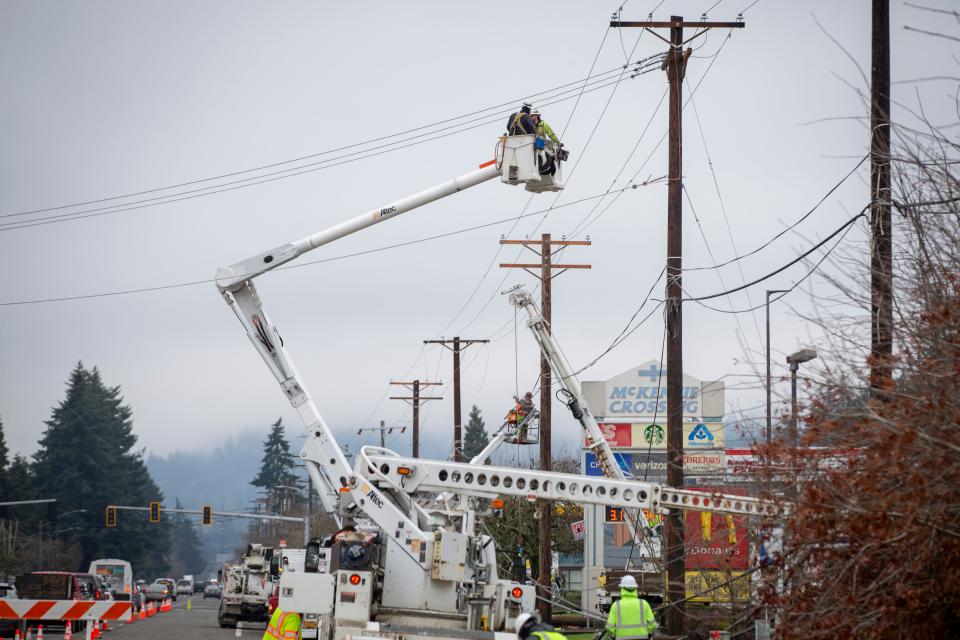
What made this Oregon winter storm so bad?
As Kranz, the meteorologist, drove down the streets of Springfield and into the foothills this week, he was stunned by what he saw.
“Nearly every tree was damaged or downed,” he said in a post on X. “Power lines down all over.”
Devastating ice storm damage over parts of northwest Oregon from two back to back storms. This is the worst winter storm damage I’ve ever seen (in the Springfield area). Nearly every tree was damaged or downed. Power lines down all over. Pray for Oregon! 🙏🏻#icestorm pic.twitter.com/rEiqeZBnBP
— Tyler Kranz (@tkranz23) January 17, 2024
It varied by location, but reports of a quarter, a half and even over an inch of ice from freezing rain were reported across the southern Willamette Valley.
Any level of freezing rain tends to bring chaos in Oregon, but when the totals reach those levels, it means major impact. A similar amount of ice knocked out power for 260,000 in Salem and the central Willamette Valley in 2021, while Eugene-Springfield saw major ice and snow storms in 2019 and 2016.
Eugene-Springfield ice storm: 'The impact was greater'
The problems began when a system of freezing air from the north became entrenched in the Willamette Valley. Then, over Jan. 12-13, a system of warmer ocean air from the southwest slid in over the top of the cold air mass and dropped precipitation. It was above freezing when the rain began to fall and didn’t have enough time to turn to snow before falling into a layer of freezing air on the ground. The water froze on contact, creating a coating of ice wherever raindrops fell.
“The system was still pretty juicy when it hit the Eugene-Springfield area and it dropped a lot of rain into that cold air mass that became freezing rain or sleet and some snow as well,” National Weather Service meteorologist Miles Higa said. “The Eugene-Springfield area just got more of the precipitation, which is why the impact was greater (than the rest of the Willamette Valley).”
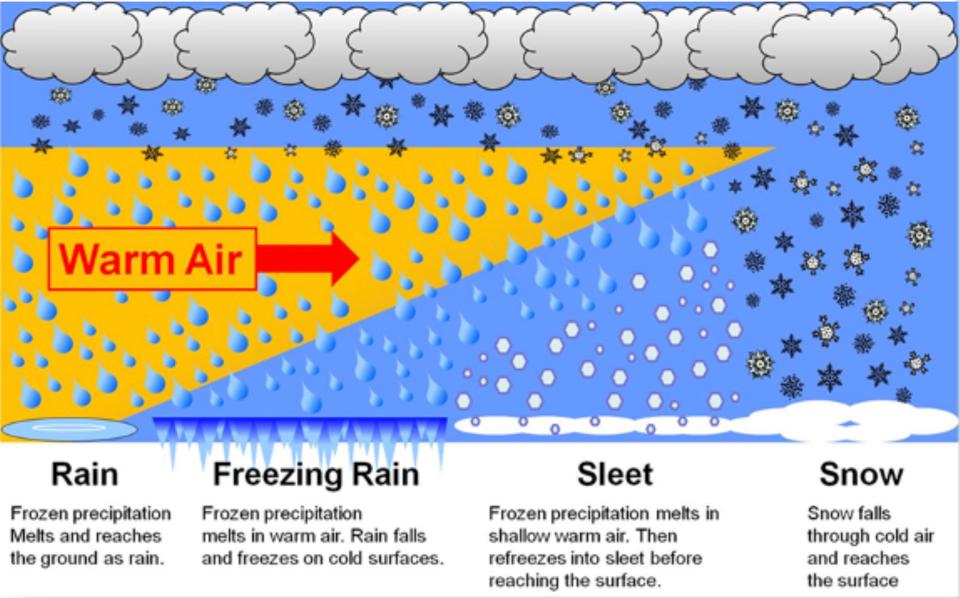
While snow can bring an impact, freezing rain is far worse for trees and power lines because it’s heavy and accumulates on branches rather than falling off like snow.
“The weight and density of ice is about the same as water, and it just sticks and loads down whatever surface that it’s falling on,” Higa said. “That’s why it’s so hard on power lines and trees, because it just loads up on them and weighs them down.”
The freezing air stayed in place for four days to stop any melt off from the ice. Then, on Tuesday, another warm and wet system from the southwest arrived. It began as freezing rain — adding more ice — but eventually pushed out the cold air mass and began the thaw.
Willamette Valley utilities hit with 2 storms and thaw
The Eugene-Springfield area has had major freezing rain and snow events in the past, most notably in 2019 and 2016.
In 2016, the number of customers without power peaked at 20,000. EWEB restored power to the majority of customers within eight days. In 2019, the number of outages peaked at 24,000 and power was restored to the majority or customers within nine days, the company said in a news release.
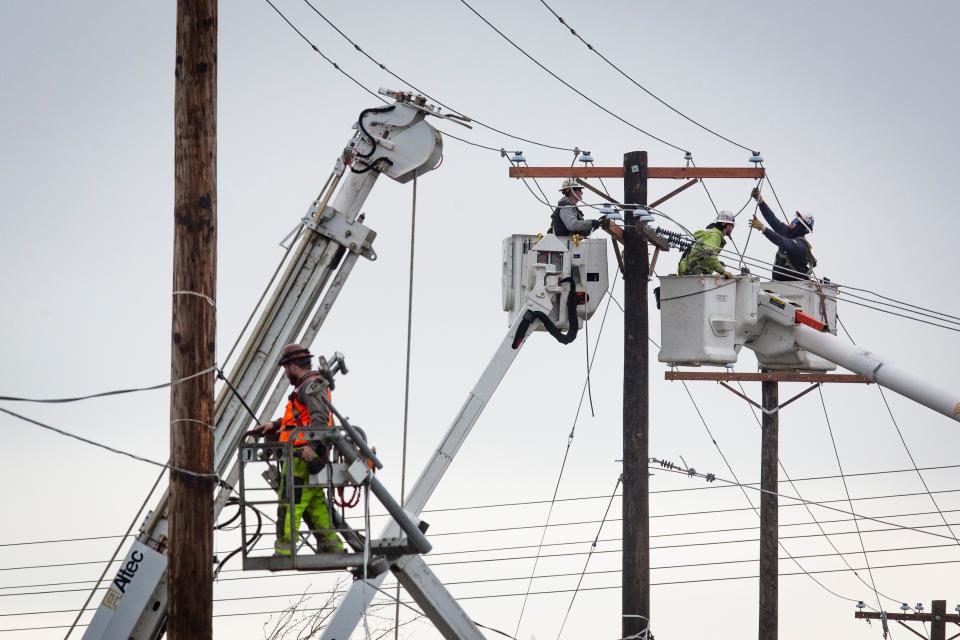
This storm may end up being the worst of the bunch, mainly because of its one-two punch of freezing rain events, freezing in between, and a rapid thaw, EWEB's Orlowski said.
“The first phase of the ice storm hit, and by Saturday all of our crews were working resorting outages and keeping on top of it — we only had about 4,000 to 5,000 customers without power,” Orlowski said. “That held steady until Tuesday night when we got that second system of ice. It wasn’t as much but it was enough to bring more outages. And then the immediate thaw was also really damaging because of a lot of tree limbs that were being held in place by the ice fell when it thawed, and just a ton broke off.
"The ice followed by the thaw was really a one-two punch for us."
Crews that had worked 16 hour days in frigid, dangerous conditions during the deep freeze found themselves "at the bottom of the mountain" by midweek, Orlowski said.
"All the progress we had made was suddenly erased,” Orlowski said.
EWEB estimated it will take into next week to restore power for its entire area.
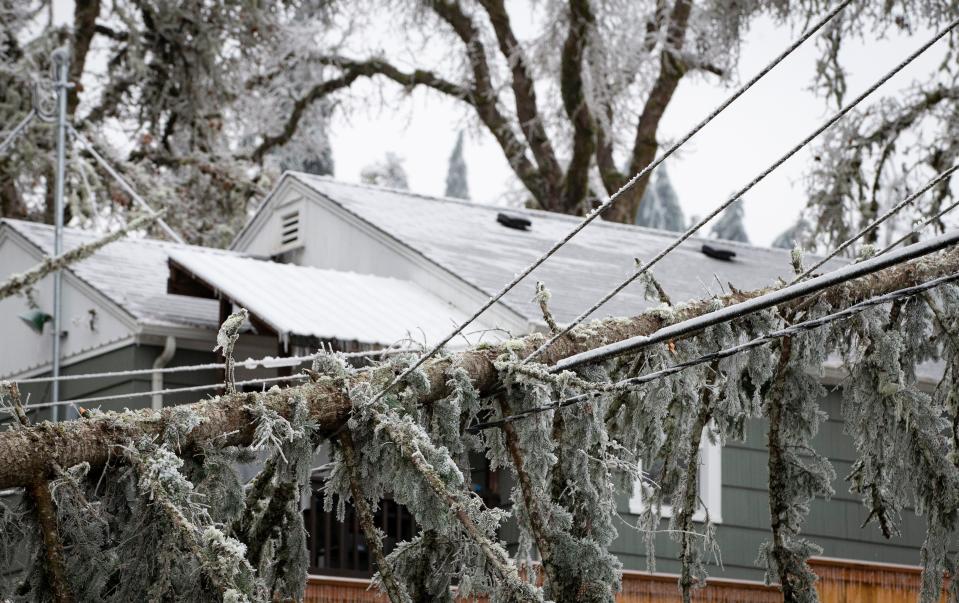
What could be done to limit power outages in Lane County?
Springfield actually got hit harder than Eugene, officials said.
When asked about improvements that could be made to limit outages, such as more trimming of trees or “undergrounding” power lines, Nelson, the Springfield Utility Board general manager, said there were limits to both.
“In terms of tree trimming, my coworkers do a fantastic job. They go through maps and systematically keep trees clear from lines,” Nelson said. “But we have to shape a tree (to keep it alive and standing) around the lines. If we decided that we needed to stop any tree that accumulates ice from falling onto lines, that would mean cutting down a lot more trees, and that’s a different thing to consider.”
Both Orlowski and Nelson said taking above ground power lines and burying them — known as undergrounding — would be extremely expensive and result in higher rates.
“It costs about 10 times more to install underground as opposed to overhead,” Nelson said. “And even in that case, an outage for a below-ground line can take a lot longer to assess and restore.”
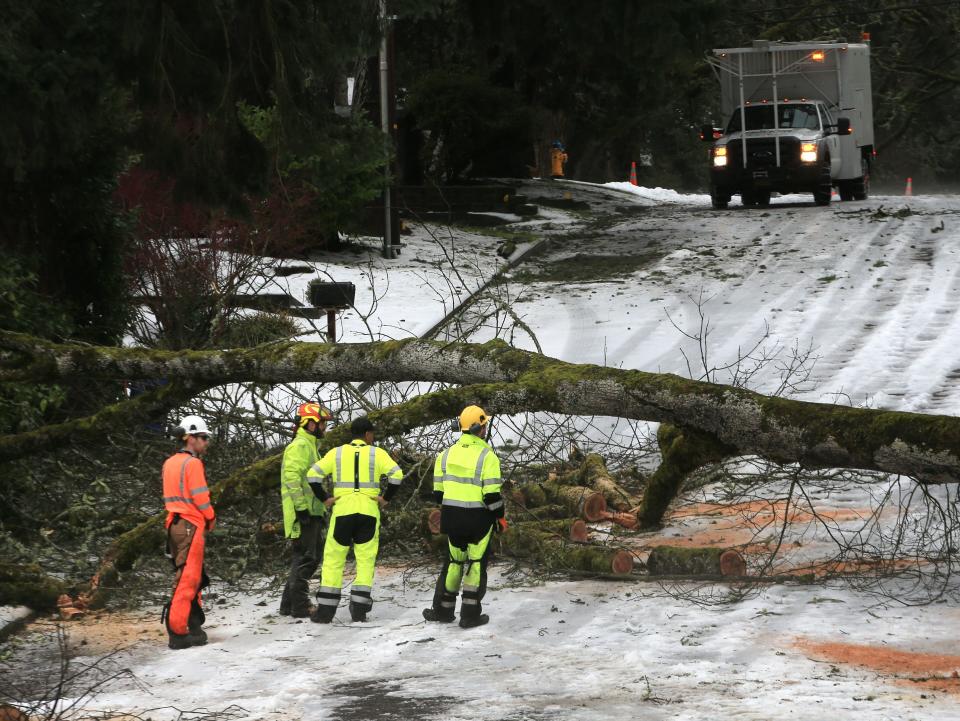
Numerous highway closures result from downed trees, crashes
If the top frustration was a loss of power, the state of the Willamette Valley’s roads was a close second for residents.
Some drivers on Interstate 5 were stuck for hours or spent the night in their cars after numerous accidents brought traffic to a halt. Highway 126 to the coast, Highway 20 to the Cascades and local highways 99 and 36 were all closed at one point.
As of Saturday, ODOT crews were still assisting utility crews restore downed power lines off I-5 in the Cottage Grove area, leading to rolling slowdowns.
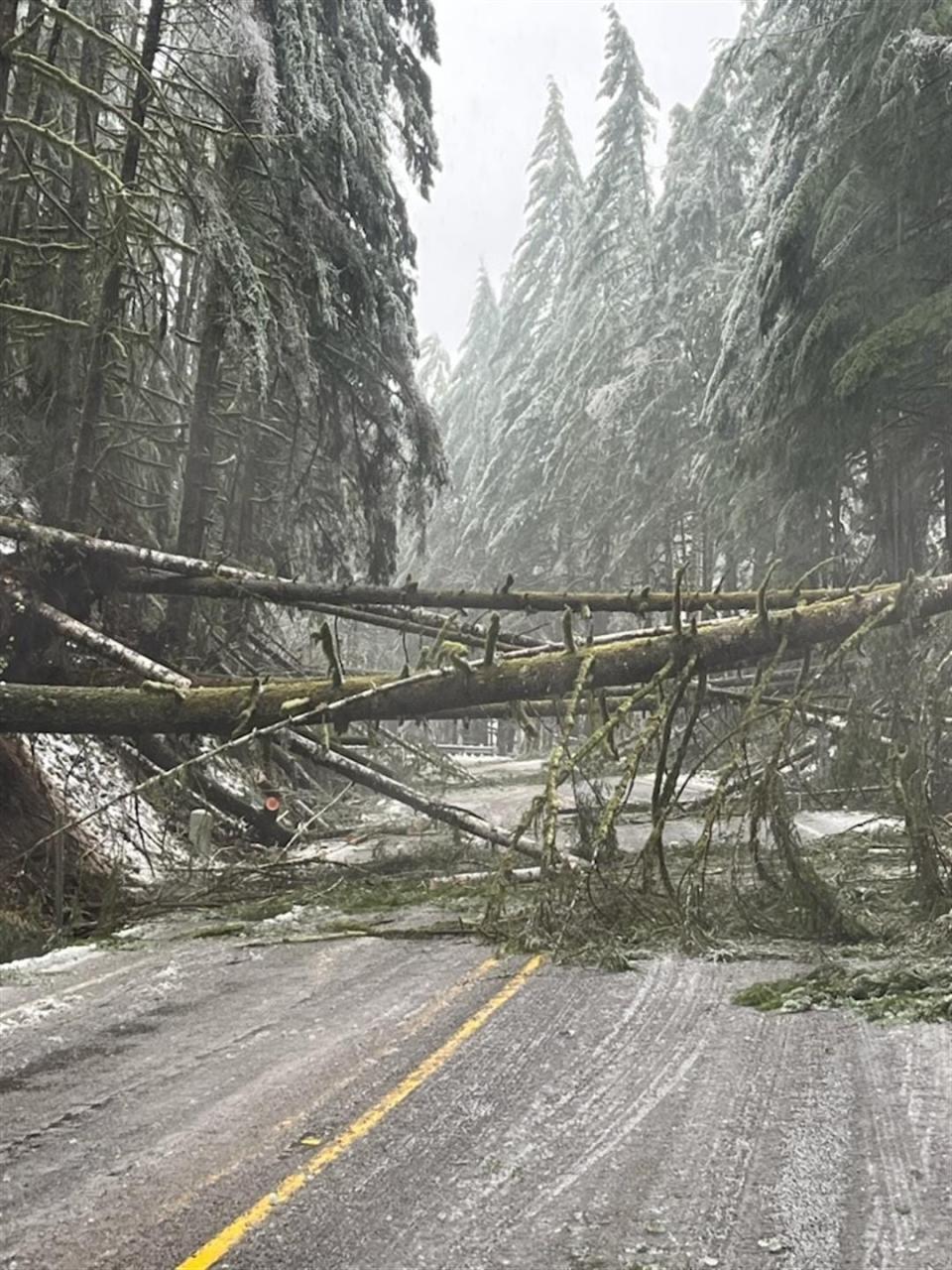
McCartt, the ODOT spokeswoman, said the agency used every tool it had in advance by “pre-treating highways with de-icer and salt, then following that up with sand and gravel and plows.”
She said the ice got so thick that liquid de-icer and salt essentially stopped working, leaving them with few options beyond sand and gravel. And she said that numerous calls for people to stay off the roads went unheeded and many commercial trucks disregarded requirements to use chains.
“I’d say we handled it the best we could,” she said. “Nothing is going to stop Mother Nature and we’d been messaging, since the beginning, for people to stay off roads or at least slow down. In a lot of cases, we just didn’t see that happening.”
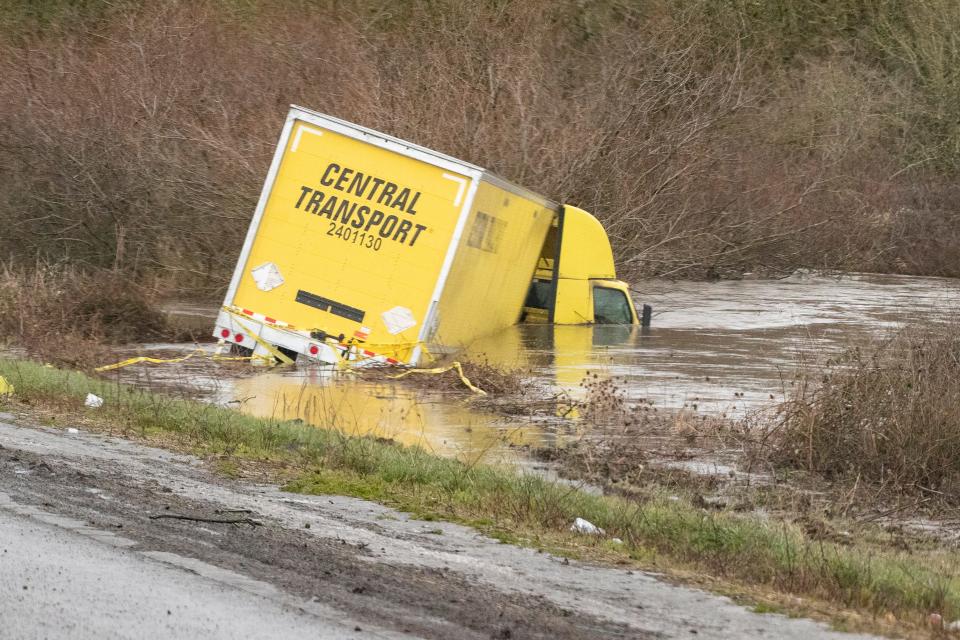
Will schools have make-up days because of the weather?
Springfield Public Schools is still assessing damage and will continue to do so through the weekend, according to Chief Operations Officer Brett Yancey. SPS declared a state of emergency Wednesday night after determining significant damage had been dealt to multiple facilities.
Yancey said the emergency declaration allows the district more flexibility to address the obstacles caused by the ice storm. SPS staff have had to travel to Albany and Roseburg to buy generators to supplement power in some of the schools. As of Friday, 9 out of 21 SPS facilities were still without power. Yancey said staff will be able to better assess the extent of the damage once power is restored.
For now, SPS is aiming to open some schools on Monday. The district will send out information over the weekend about which schools will open. Administration is also considering the possibility of remote learning.
It was not immediately clear if the district would need to add make-up days. Students have not been in class since the Martin Luther King Jr. Day holiday on Monday. The Oregon Department of Education requires districts to provide a minimum number of instructional minutes.
"Safety is our top priority," said SPS spokesperson Allison McGowan. "The buildings have to be safe to get kids back in. The education portion is really important, but safety is the top priority."
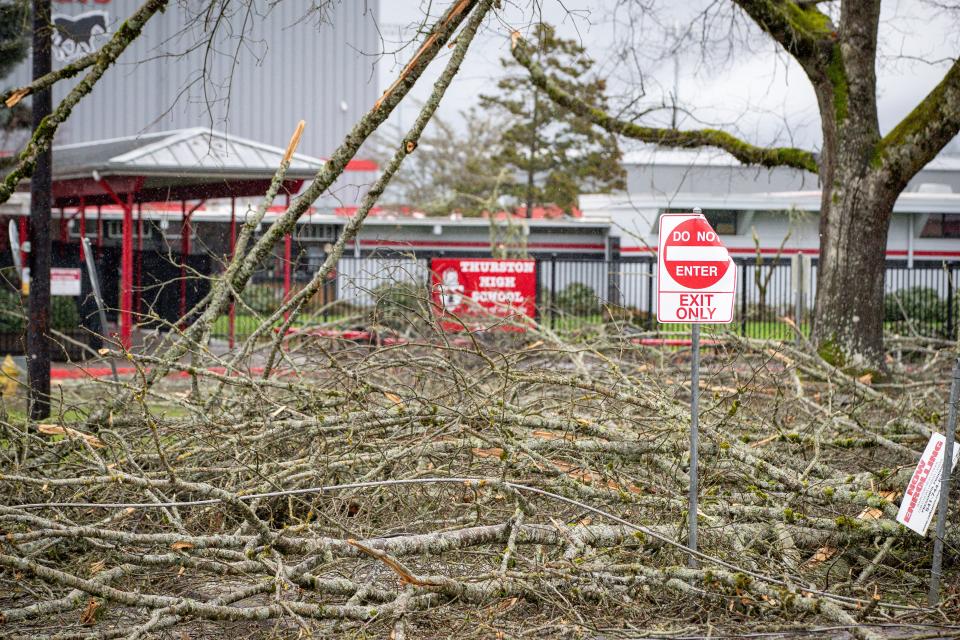
The district has also opened two respite centers at schools that have had the most consistent power: Springfield High and Two River-Dos Rios Elementary. The centers will offer two meal services a day and will be open from 7 a.m. to 7 p.m. at least through Sunday.
Eugene School District 4J was closed through Friday and reported some damages to buildings, property and equipment, caused by water intrusion and downed trees. 4J Superintendent Andy Dey said the facilities team has done thorough checks on all buildings and determined there is no structural damage that would impede classes going into next week. Damage was widespread throughout the district, but Dey didn't yet have an estimate for how much it would cost to repair.
Up to 10 4J schools had lost power during the storm, affecting food services due to spoiled food.
"We're in better shape than other neighboring districts in the county, but by no means were we spared some pretty significant damage," Dey said.
Dey said schools should be fully up and running Monday, barring any unforeseen circumstances.
"For the entire community, regardless of what your job is, or whether or not you have students, this has been tough," Dey said. "We know that school closures can be particularly difficult for our most marginalized and vulnerable students."
As far as make-up days, 4J is still determining whether it will be necessary, depending on the weather in the coming months.

Schools had began handing out food boxes Friday until supplies last. The boxes are intended for 4J staff and families.
The locations include:
Holt Elementary School, 770 Calvin St., Eugene
Arts & Technology Academy Middle School, 1650 W 22nd Ave., Eugene
Howard Elementary, 700 Howard Ave., Eugene
Roosevelt Middle School, 500 E 24th Ave., Eugene
Bethel School District was the only Eugene-Springfield metro district back in the classroom Thursday. Bethel spokesperson Alisha Dodds said damage was minimal.
"We feel really thankful and lucky that our schools are in great shape. We never lost power or internet at any of our schools," Dodds said in an email. "We did have some tree limbs come down at some schools, but they didn't cause any real damage only cosmetic damage. We do have a few leaks at some of our schools just from melting ice, but no major issues that are causing huge problems."
The Bethel area in western Eugene didn't have as many trees coming down on power lines compared to Springfield and central Eugene.
Bethel is not looking to make up the two days it was closed, as the district had some inclement weather days built into its calendar.
Register-Guard reporters Haleigh Kochanski and Alan Torres contributed to this report.
Miranda Cyr reports on education for The Register-Guard. You can contact her at mcyr@registerguard.com or find her on Twitter @mirandabcyr
Zach Urness has been an outdoors reporter in Oregon for 15 years and is host of the Explore Oregon Podcast. Urness is the author of “Best Hikes with Kids: Oregon” and “Hiking Southern Oregon.” He can be reached at zurness@StatesmanJournal.com or (503) 399-6801. Find him on Twitter at @ZachsORoutdoors.
This article originally appeared on Salem Statesman Journal: Worst ice storm in Eugene history? Why it packed a big punch

